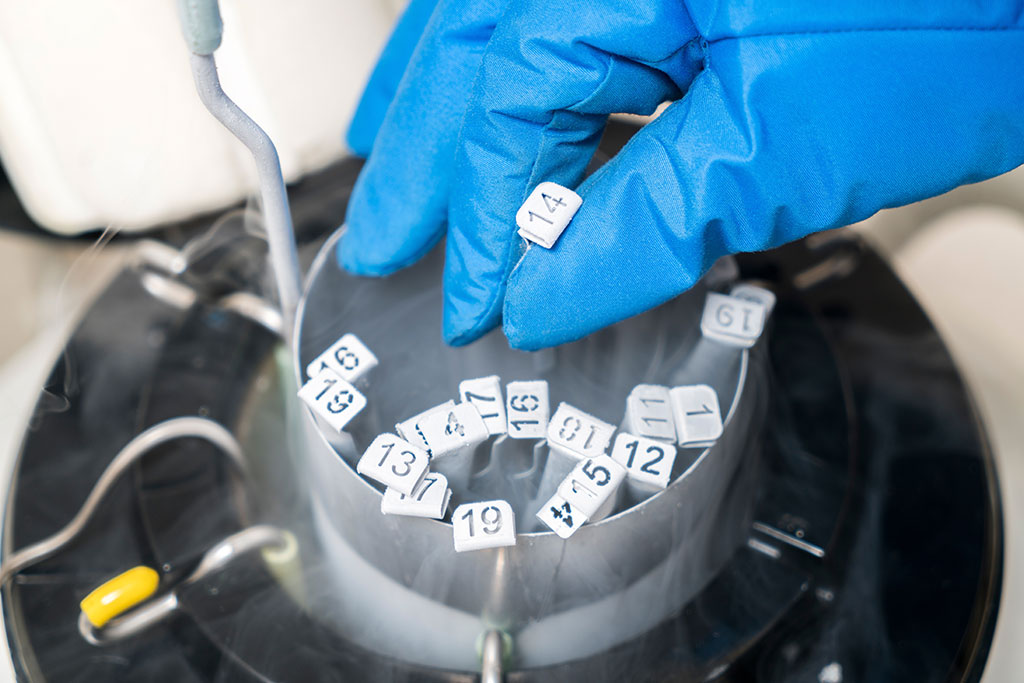What Is Cryopreservation?
Cryopreservation involves freezing eggs, sperm, or embryos at very low temperatures for later use. When needed, these frozen reproductive cells are thawed, fertilised, or utilised in fertility treatment procedures. Sperm can be utilised for IUI (insemination) or IVF (in vitro fertilisation) treatments, while IVF procedures typically involve the use of eggs and embryos. Cryopreservation enables cells to remain viable for a period by suspending all activity during the freezing process until they are thawed.
What Is the Process of Cryopreservation?
Cryopreservation consists of the following steps:
- Ovarian stimulation – They will provide medications to stimulate your ovaries to produce numerous eggs.
- Egg retrieval – This procedure is done in the hospital while you are sedated. A transvaginal ultrasound is typically used to detect follicles by inserting a probe into your vagina. Then, they place a needle into the follicles to aspirate the follicular fluid which contains the eggs. You may experience mild discomfort and cramps following the treatment.
- Freezing – After retrieving the eggs, they freeze them for future use. Most often, they use vitrification, a rapid-freezing procedure for freezing eggs. Cryoprotectants are used in this chilling process to keep ice crystals from forming. Slow freezing can also be used to freeze eggs. However, vitrification or quick freezing is a quick and more successful procedure since it minimises the danger of oocyte damage, resulting in better rates of egg survival during freezing and thawing.
Successful egg cryopreservation ensures that you receive the finest possible start when you’re ready to become pregnant.
What Is Sperm Cryopreservation?
Sperm freezing, also known as sperm cryopreservation, is a technique used to preserve sperm. It assists men in safeguarding their fertility during treatments that may cause infertility, such as cancer therapy or prostate and testicular surgery. This method is also utilised for sperm banking purposes. A sterile dish is used to collect the semen sample, which undergoes evaluation for factors including volume, viscosity, sperm motility, count, and other parameters. Sperm cryopreservation can be performed using two methods:
- Slow freezing – The process of freezing includes cooling the sperm for a period of two to four hours before storing it in nitrogen at a temperature of minus 196 degrees celsius.
- Rapid freezing – It involves placing samples into liquid nitrogen for a duration of eight to ten minutes. Sperms are better preserved during cryopreservation with this method because of their fluidity and low water content.
What Is Embryo Cryopreservation?
During the process of embryo cryopreservation, a woman is given medication to release eggs, which are then fertilised with her partner’s sperm. Within three to five days of fertilisation, the resultant embryos are frozen. There are two methods for freezing: slow freezing, which gradually freezes embryos over a period of 2 to 4 hours, and vitrification, which rapidly freezes embryos using cryoprotectants. Cryopreservation is an option for individuals who are not yet ready for childbirth but wish to preserve the possibility for the future. It can also be beneficial in IVF cycles for freezing the surplus embryos.
Conclusion
Preserving fertility is crucial for various reasons, including lifestyle choices, social factors, and career aspirations. People in high-risk professions often opt to freeze their eggs, sperm, or embryos. For women, preserving eggs is an excellent way to protect fertility and ensure egg quality if they decide to undergo IVF in the future.

